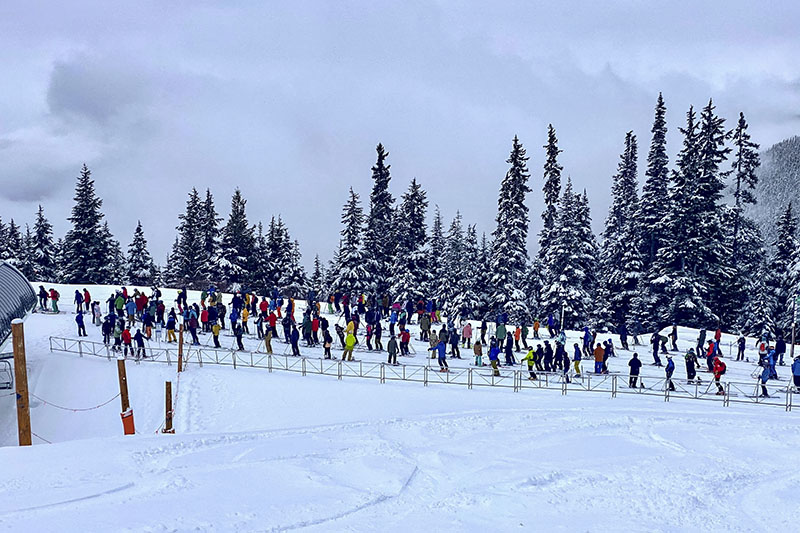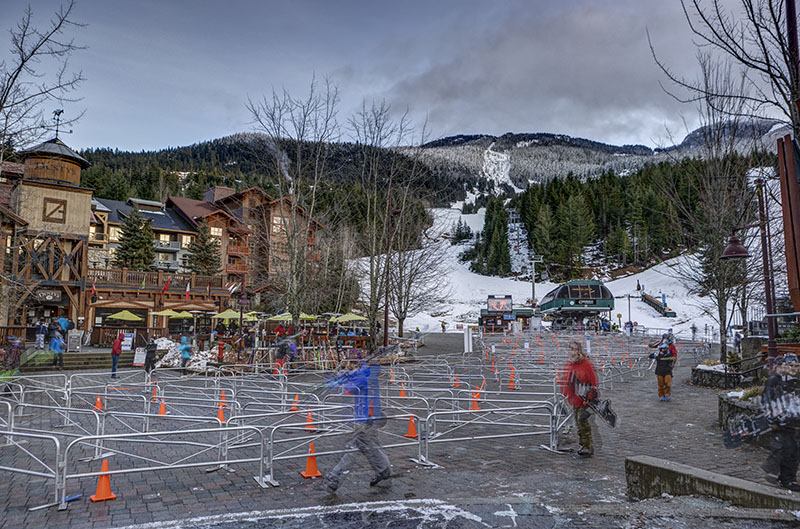Snow Sports Reimagined
Whistler Operators Respond to Heightened Need for Socially Distanced Recreation
By David Burke / Images by Joern Rohde

This past summer, sales of bicycles and bicycle parts soared in North America as citizens seeking socially distanced outdoor recreation after months of coronavirus-related restrictions forged their way out onto the roads and trails. It reached the point where retailers simply couldn’t keep up with demand, and some types of recreational equipment and replacement parts were out of stock.
It appeared a similar trend was developing in western Canada and elsewhere as the pandemic carried into the winter of 2020-’21.
“We’re hearing from a lot of retailers that gear is being snapped up at the shops,” said Tim Hope, managing director for Whistler Olympic Park (WOP), the popular cross-country skiing and snowshoeing venue that hosted the Nordic events during the 2010 Winter Olympics. “We’re also seeing good sales of our season’s passes.”
Jennifer Smith, Pacific Northwest communications manager for Vail Resorts, said that for Whistler Blackcomb (WB) and Vail’s other 33 properties, early-season sales of the various pass products for 2020-’21 were up 18 per cent over last season.


“Each summer, we all wait patiently for the return of winter, and this year more than ever, we need it,” Rob Katz, Vail Resorts CEO, wrote in a letter to guests and employees in late August. “We need to reconnect with the outdoors, we need to feel normal and energized as we carve down the mountain with crisp alpine air in our faces.”
Granted, the need to keep visitors healthy means the experience of going skiing and snowboarding or otherwise getting outdoors in the snow has forced operators to rethink their business models — in particular, the number and proximity of interactions between guests and staff, and each other, in and around lodges, on lifts and other resort infrastructure.

At WB, the changes begin well before skiers and snowboarders arrive at the hill. All tickets, including day tickets, must now be purchased online or by phone. This past fall, the company implemented a reservation system that aims to help smooth out the peaks and valleys of daily skier visits, based on capacity figures that depend on a more limited lift capacity and other factors, including the weather. WB passholders and those purchasing tickets must pre-book their days on the mountains.
Masks are required for guests in lift lines and indoors. The need to maintain physical distance means, for example, that while a family of four can ride a quad chair together, two single guests must be seated on the opposite ends of the same chair. Those upload capacity restrictions, in turn, are part of the calculation of how many guest reservations WB will accept on a given day.
“I think people have it pictured as ‘there’s a cutoff,’ but that’s not really how it works,” Smith said. As each day approaches, the number of late reservations WB makes available might be affected by, say, a forecast of stormy conditions up high, affecting managers’ ability to open more lifts and upper-mountain terrain, she said.
“It’s not about a maximum number, but on being able to manage our capacities for a given day, based on a number of factors, always taking into account the health and safety of our guests,” Smith said.


Under B.C. health restrictions that existed at press time, both WB and WOP are encouraging guests to pre-plan their visits to minimize the amount of time spent indoors — again, to provide a great experience and level out the busy and non-peak periods. WB urges guests to use its convenient “grab-and-go” food kiosks or pre-book space inside one of its eight food-services outlets on their phones through the Time to Dine app, Smith said.
The café inside WOP’s day lodge is operating at 50 per cent capacity, as per B.C. health guidelines, and is being run more like a restaurant than in the past, with only those eating food and drink purchased from the café seated inside. Outdoor and patio spaces will be available for those who bring their own food, Hope said.
Both entities encourage guests to plan, dress for the weather and be prepared to spend more time outside. “If you want to use the lodge, plan in advance,” Smith said. “We’re also asking that guests bring some snacks and water in your pockets so that you have a backup plan no matter what happens.”
“For us, participation is usually higher on the nice, sunny days, but whatever the conditions, people need to remember to bring warm layers for the weather that’s anticipated,” Hope said.
Hope added that WOP managers are looking out for lessons from this unusual season to help serve WOP customers better in the future. For instance, the Nordic ski and snowshoe rental reservation system that’s being implemented this season to help limit traffic in and around the rental shop could well be retained in the future, he said.
Smith said that while this season has brought greater change than in previous years, both short- and longer-term WB staff are trained and ready to adapt. “Given the fact that we’re used to things changing day to day, our team and our workers are already quite agile,” she said.
Adding that with a “La Niña” winter predicted, “it’s looking like a good snow year, and we know that the (international) borders likely won’t be open, so that will somewhat limit the number of customers coming here. So that’s going to make it a unique year.”
Added Hope, “At the core of it, we’re a great place for people to be outdoors cross-country skiing and snowshoeing, because everyone needs to have different forms of recreation, and we’re happy to provide that.”

